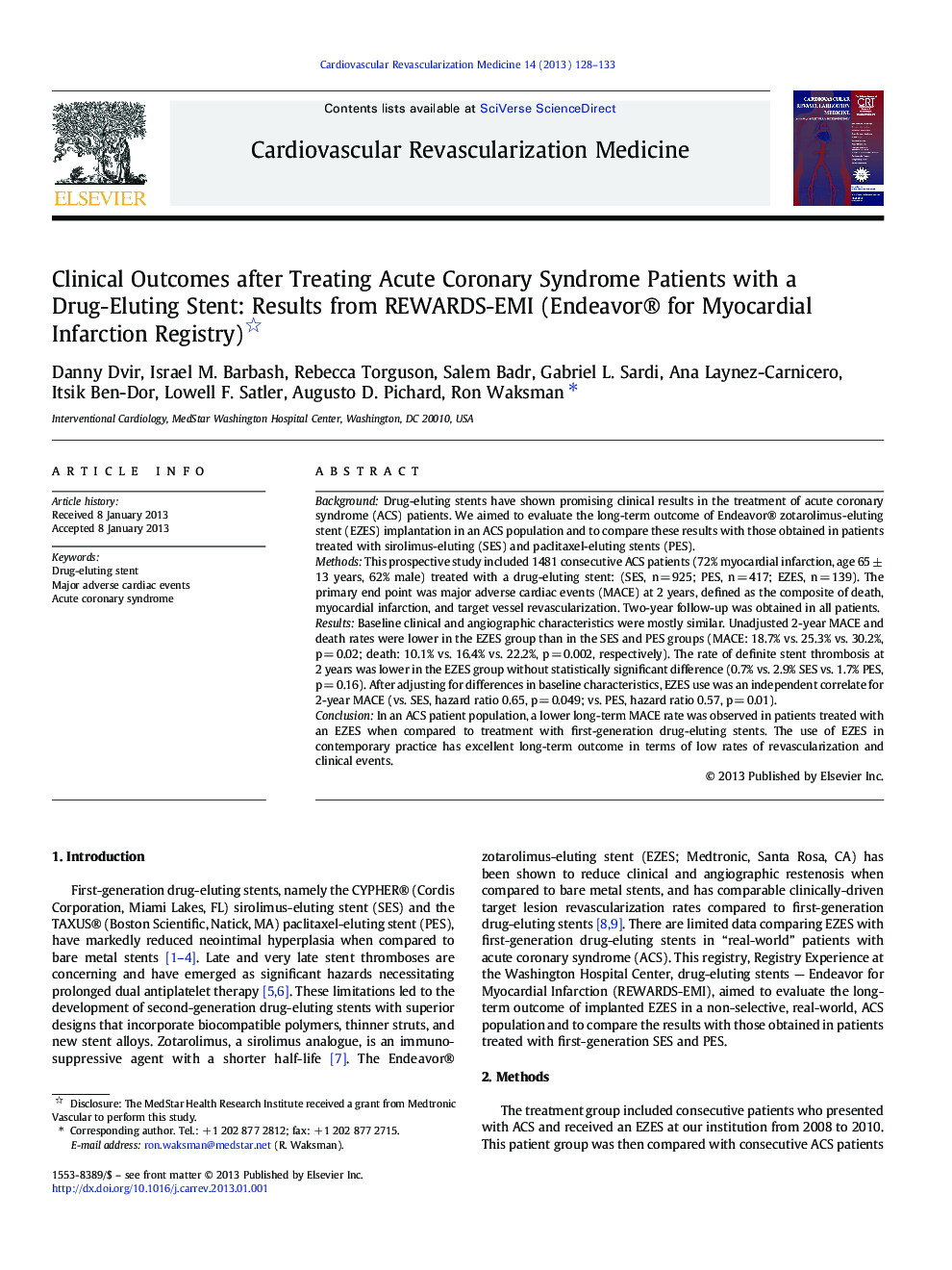| Article ID | Journal | Published Year | Pages | File Type |
|---|---|---|---|---|
| 2837160 | Cardiovascular Revascularization Medicine | 2013 | 6 Pages |
BackgroundDrug-eluting stents have shown promising clinical results in the treatment of acute coronary syndrome (ACS) patients. We aimed to evaluate the long-term outcome of Endeavor® zotarolimus-eluting stent (EZES) implantation in an ACS population and to compare these results with those obtained in patients treated with sirolimus-eluting (SES) and paclitaxel-eluting stents (PES).MethodsThis prospective study included 1481 consecutive ACS patients (72% myocardial infarction, age 65 ± 13 years, 62% male) treated with a drug-eluting stent: (SES, n = 925; PES, n = 417; EZES, n = 139). The primary end point was major adverse cardiac events (MACE) at 2 years, defined as the composite of death, myocardial infarction, and target vessel revascularization. Two-year follow-up was obtained in all patients.ResultsBaseline clinical and angiographic characteristics were mostly similar. Unadjusted 2-year MACE and death rates were lower in the EZES group than in the SES and PES groups (MACE: 18.7% vs. 25.3% vs. 30.2%, p = 0.02; death: 10.1% vs. 16.4% vs. 22.2%, p = 0.002, respectively). The rate of definite stent thrombosis at 2 years was lower in the EZES group without statistically significant difference (0.7% vs. 2.9% SES vs. 1.7% PES, p = 0.16). After adjusting for differences in baseline characteristics, EZES use was an independent correlate for 2-year MACE (vs. SES, hazard ratio 0.65, p = 0.049; vs. PES, hazard ratio 0.57, p = 0.01).ConclusionIn an ACS patient population, a lower long-term MACE rate was observed in patients treated with an EZES when compared to treatment with first-generation drug-eluting stents. The use of EZES in contemporary practice has excellent long-term outcome in terms of low rates of revascularization and clinical events.
